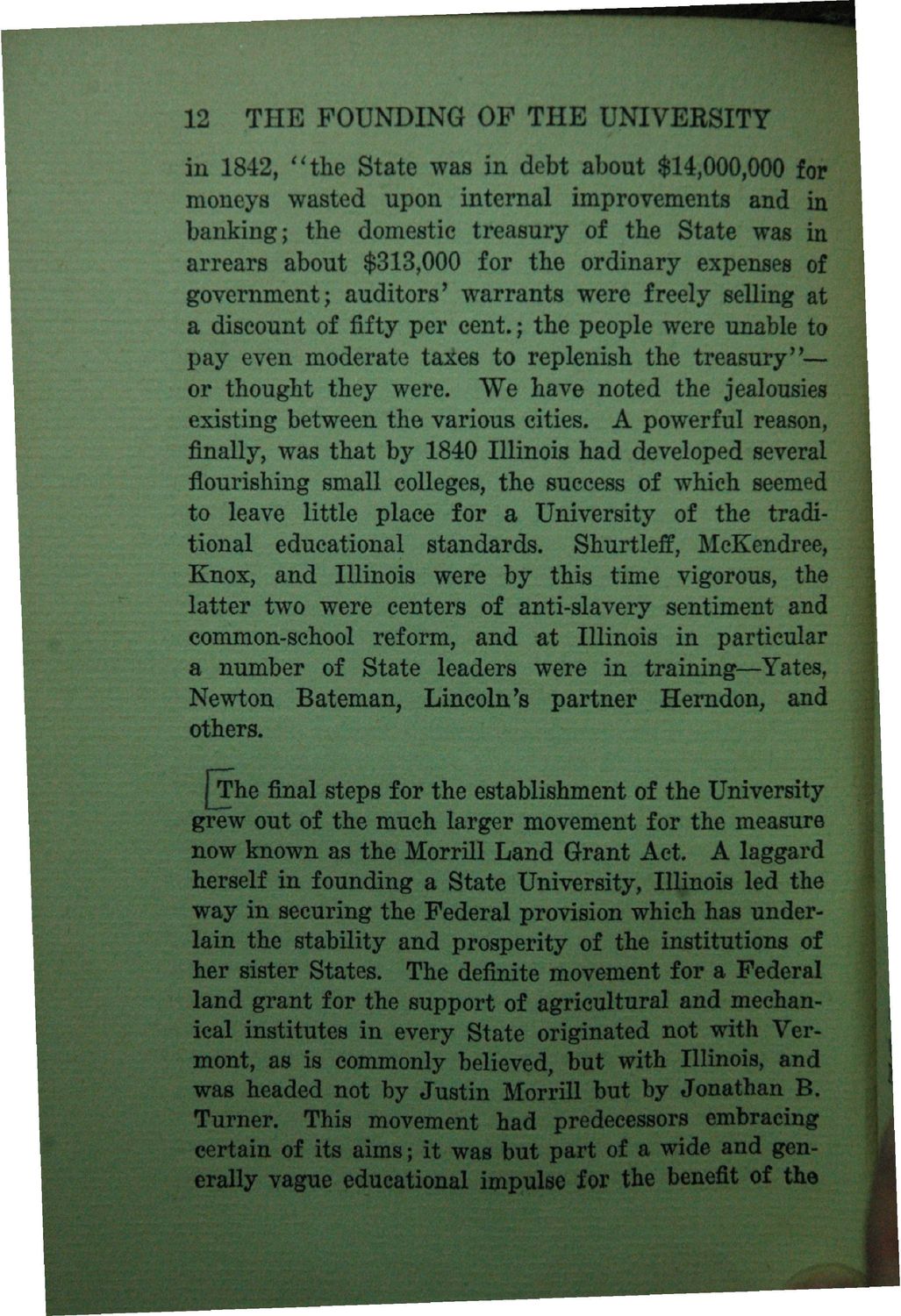| |
| |
Caption: Book - History of the University (Nevins)
This is a reduced-resolution page image for fast online browsing.

EXTRACTED TEXT FROM PAGE:
12 THE POUNDING OF THE UNIVERSITY in 1842, "the State was in debt about $14,000,000 for moneys wasted upon internal improvements and in banking; the domestic treasury of the State was in arrears about $313,000 for the ordinary expenses of government; auditors' warrants were freely selling at a discount of fifty per cent.; the people were unable to pay even moderate taxes to replenish the treasury"— or thought they were. We have noted the jealousies existing between the various cities. A powerful reason, finally, was that by 1840 Illinois had developed several flourishing small colleges, the success of which seemed to leave little place for a University of the traditional educational standards. Shurtleff, McKendree, Knox, and Illinois were by this time vigorous, the latter two were centers of anti-slavery sentiment and common-school reform, and at Illinois in particular a number of State leaders were in training—Yates, Newton Bateman, Lincoln's partner Herndon, and others. [The final steps for the establishment of the University grew out of the much larger movement for the measure now known as the Morrill Land Grant Act. A laggard herself in founding a State University, IHjnois led the way in securing the Federal provision which has underlain the stability and prosperity of the institutions of her sister States. The definite movement for a Federal land grant for the support of agricultural and mechanical institutes in every State originated not with Vermont, as is commonly believed, but with Illinois, and was headed not by Justin Morrill but by Jonathan B. Turner. This movement had predecessors embracing certain of its aims; it was but part of a wide and generally vague educational impulse for the benefit of the
| |